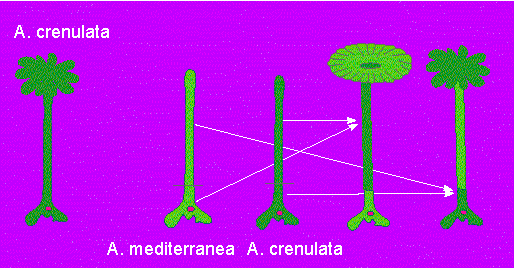- Most conspicous green algal seaweeds (Ulva, Enteromorpha) in marine systems
- Coralline green alga (Halimeda, Cymopolia); remains form up to 50 m thick layers in sediments at the Great Barrier Reef, Australia
- Filamentous and unicellular forms in freshwater and marine systems
- Siphonaceous forms (siphon = tube) of spectacular morphological differentiation (Acetabularia)
- Earliest evolutionary form of UTC cluster; gametes sometimes with small scales ressembling prasinophyceans
- Major groups:
- Ulotrichales: unicells, filaments, simple life cycle
- Ulvales: uninucleate cells, alternation of 2 multicellular generations
- Siphonocladales: multinucleate cells, not siphonous
- Dasycladales, Caulerpales: siphonous forms
- Morphologically diverse group of flagellates, non-flagellated unicells, unbranched and branched filaments; uninucleate and multinucleate cells, blades of single-layer uninucleate cells
- Life cycle shows only the zygote as diploid stage
- Codiolum stage: sac-like, unicellular, thick-walled stage attached to substrate; can survive period of dormancy
- Haploid zoospores (meiospores) are produced from the codiolum stage and form the vegetative, haploid gametophyte
- The genus Codiolum: the reproductive codiolum stage is named after the genus Codiolum, because the zygote stage ressembles this genus; however, it appears that most occurrences of Codiolum in nature are rather codiolum stages of other ulotrichales algae
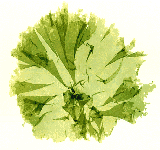
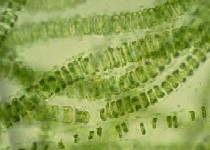

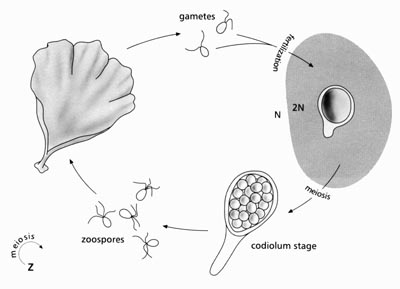
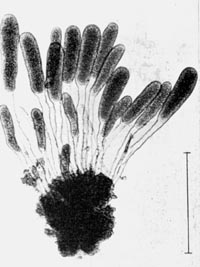
- Named after the common sea lettuce Ulva
- Uninucleate cells with one chloroplast
- Life cycle with two macroscopic generations; biflagellate, naked gametes; quadriflagellate, naked zoospores (meiospores)
- Isomorphic generations, i.e. sporo- and gametophyte look alike



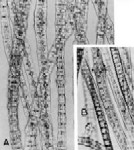
left three: Enteromorpha; right: Percursaria (biseriate filaments)
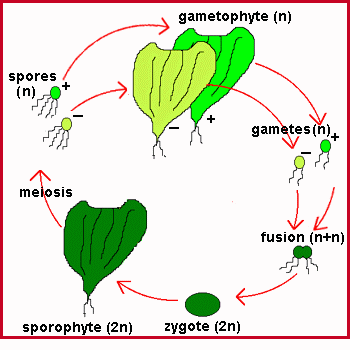
- Multinucleate cells forming branched filaments or pseudoparenchymatous blades
- Cell division uncoupled from mitosis; septum (cross-wall) formation by furrowing
- Reticulated plastid or many small discoid plastids with pyrenoids
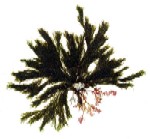
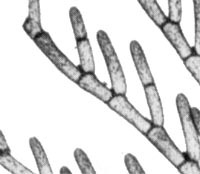
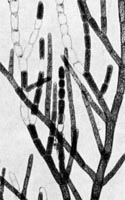
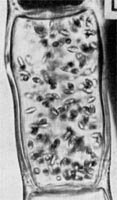

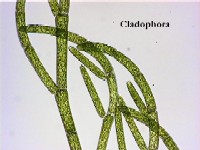
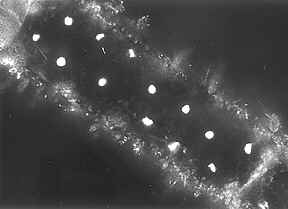
- Named after the genus Caulerpa
- Siphonous, multinucleate marine macroalgae
- One large cell – vulnerable to substantial plasma loss upon damage; wound-healing occurs in seconds, involving actin-mediated contraction and a plug of cell wall material
- Amyloplasts: unpigmented plastids for starch storage
-
Sexual
reproduction: anisogamy, biflagellate gametes;
life history poorly understood; quadriflagellated zoospores rare
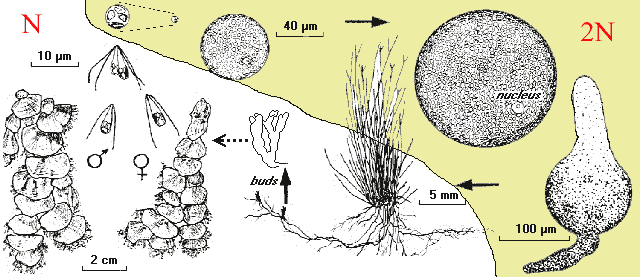
- Derbesia-Halicystis life cycle: heteromorphic life cycle, sporophyte and gametophyte of Halicystis has been described as different species (Derbesia)
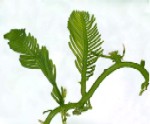
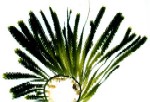

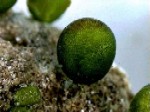
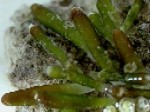

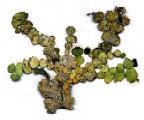
- Small group (19-50 species) of marine macroalgae of shallow, tropical and subtropical waters
-
Siphonous
vegetative thalli with basical holdfast
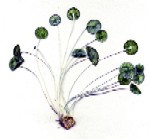
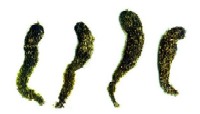
- Nucleus located in holdfast, diploid or polyploid
- Thin layer of plasma with large central vacuole
- Starch is stored in plastid and in the cytoplasma
-
Reproduction
by biflagellate gametes produced in small spherical, walled cysts
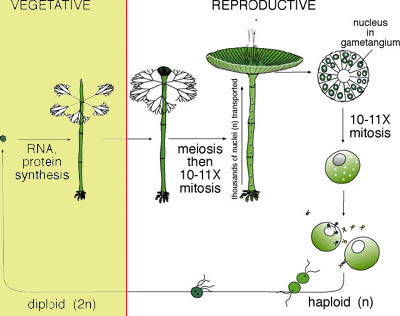
- Meiosis of the central nucleus occurs sometime prior to the onset of reproductive development
- Mitotic divisions produce hundreds of secondary nuclei, which are transported by plasma flow to the reproductive part of the thallus to form gametes
-
The
Mermaid‘s Wine Glass:
Hämmerlings reconstruction experiments in the 1930‘s -
Regeneration
of the head only occurs in the section carrying
the nucleus --> thallus regeneration is under the control of the nucleus
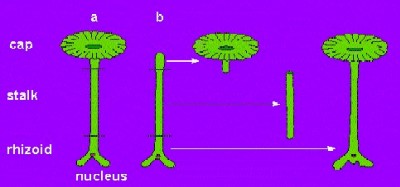
-
Morphology
of the head: stems of two different species with different head morphology
are plugged on nucleus-carrying holdfast of two species; the new head corresponds
to the species of the nucleus --> head morphology is controlled by the
nucleus
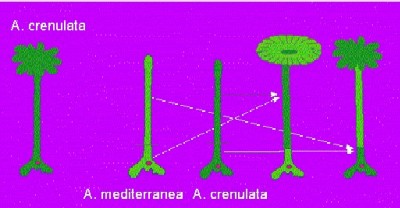
-
Gamete
production: stem and head of species 2 are
plugged on holdfast of species 1; micronuclei and gametes are formed within
the new (species 2) head by the nucleus of species 1
